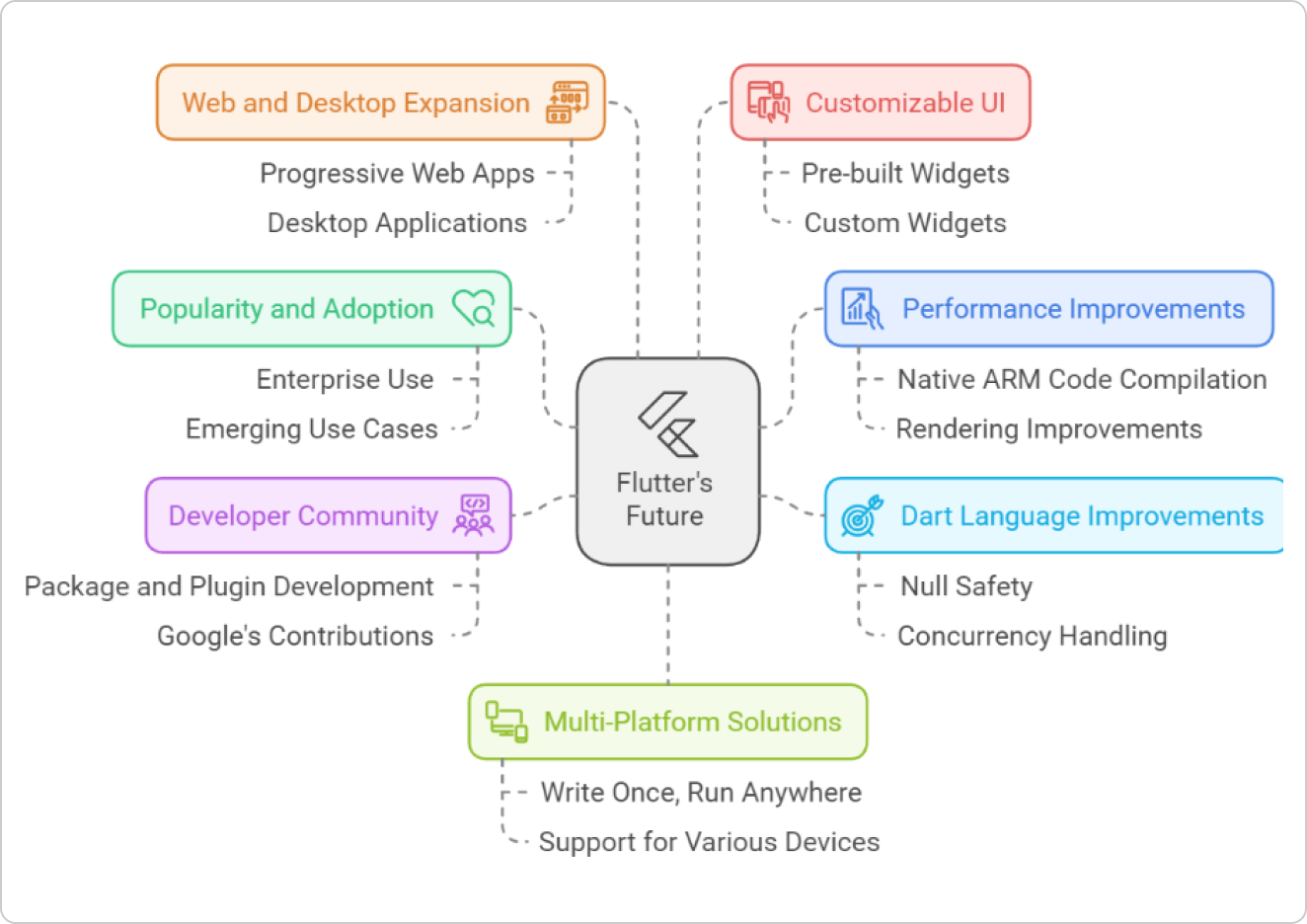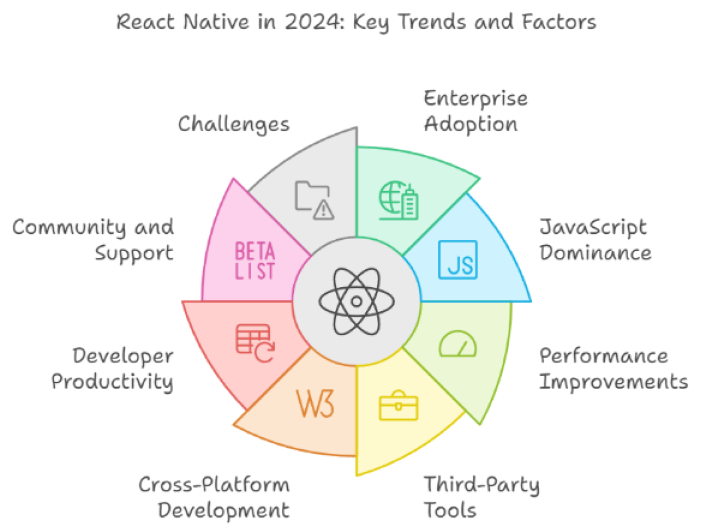 White papers > React vs Flutter
White papers > React vs FlutterReact vs Flutter
 vs
vs White papers > React vs Flutter
White papers > React vs Flutter vs
vs
We are approaching the end of 2024, a year that has seen rapid advancements in technology, particularly in cross-platform development tools. In this whitepaper, we delve into the current state and trends surrounding these tools, with a specific focus on two dominant frameworks: Flutter and React Native. Both have matured significantly, offering unique strengths and capabilities for developers and businesses. Drawing from our own experiences and industry insights, we compare their performance, ecosystem, and long-term viability for building scalable applications. Additionally, we explore the role of community support, evolving best practices, and the future trajectory of cross-platform development as we move into 2025 and beyond

Flutter’s performance is considered one of its strongest aspects. Since it compiles to native ARM code, its apps generally outperform other cross-platform frameworks like React Native.
Dart has evolved significantly, and its integration with Flutter makes it a compelling choice for cross-platform app development. The recent enhancements in Dart (like null safety and improved concurrency handling) help make Flutter projects more robust and secure
Flutter's community has grown considerably, with numerous packages, plug-ins, and tools being developed to streamline common tasks
Flutter's ability to build apps for web and desktop is a game-changer. In 2024, many companies will continue investing in Progressive Web Apps (PWAs) and desktop applications using Flutter
Flutter is favoured for its ability to create highly customized UIs
The technology world is moving toward multi-platform solutions. With more devices (from smartphones to wearables, TVs, and cars) needing applications, Flutter’s capacity to write once and run anywhere (including mobile, web, and desktop) positions it as a future-proof technology
Flutter still faces stiff competition from React Native
While Dart is easy to pick up, it’s not as popular as JavaScript, meaning there may be a learning curve for developers unfamiliar with it
Flutter is set to remain a key player in cross-platform development throughout 2024 and beyond. Its constant updates, strong backing from Google, multi-platform capabilities, and vibrant community all suggest a bright future

React Native remains a strong contender for cross-platform mobile app development, but its future holds both challenges and opportunities as the framework continues to evolve. Key trends shaping React Native in 2025 include performance improvements, deeper integration with native modules, and new tooling for enhanced developer productivity. The framework’s reliance on JavaScript is both a strength and a point of debate, especially as competition from languages like Dart (used in Flutter) grows. The demand for highly optimized, feature-rich apps pushes React Native to address performance bottlenecks and support emerging technologies such as AI, AR/VR, and even IoT. Its active community continues to drive innovation, but future success will depend on balancing ease of use with the need for increasingly sophisticated mobile experiences.

React Native remains a top choice for cross-platform mobile development in 2024 due to its JavaScript foundation, extensive library of third-party tools, and upcoming performance improvements. With a large community and active contributions from major players like Facebook, Microsoft, and Shopify, React Native will continue to be a robust solution for developers, especially for mobile-first applications


other frameworks
At CognitivZen, we develop multiple mobile applications using React Native and Flutter. Our experience leans more towards React Native for its foundation in JavaScript-based Technologies and shorter learning curve
For more information and case studies, visit our website http://www.cognitivzen.com